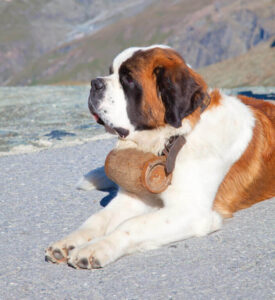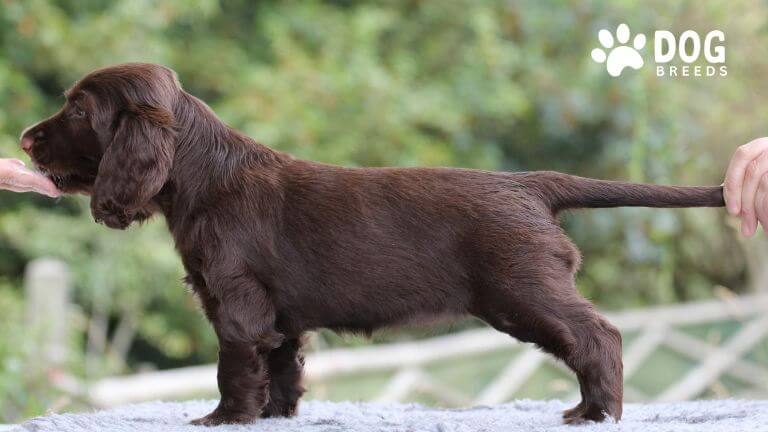St. Bernard Dog Breed: Care, Temperament & Health Guide
The Saint Bernard, a giant dog breed with Swiss roots, is renowned for its role as a rescue dog in the snowy Alps. Originating from the Hospice of the Great St. Bernard in the 17th century, these dogs were bred to aid in mountain rescues. Their strength, keen sense of smell, and ability to navigate deep snow made them invaluable in saving lives.

Physical Characteristics
Saint Bernards are large and muscular, with a robust build.
- Size: Males stand 28–30 inches tall, while females are slightly smaller at 26–28 inches. They typically weigh between 120–180 pounds.
- Coat: Their dense coat can be short or long, with colors ranging from red and white to brindle patches.
- Distinctive Features: A broad head, dark eyes, and a friendly expression are hallmarks. Their large paws and powerful physique distinguish them from other breeds like the Bernese Mountain Dog or Great Pyrenees.
St. Bernard Dog Breed Overview
| Category | Details |
| Origin | Switzerland |
| Purpose | Originally bred as rescue dogs in the Swiss Alps |
| Size | Giant |
| Weight | Males: 140-180 lbs (64-82 kg) Females: 120-140 lbs (54-64 kg) |
| Height | Males: 28-30 inches (71-76 cm) Females: 26-28 inches (66-71 cm) |
| Coat Type | Dense, water-resistant double coat; comes in short-haired (smooth) and long-haired varieties |
| Colors | White with red, red and brindle, or white with black markings |
| Lifespan | 8-10 years |
| Temperament | Gentle, friendly, loyal, patient, and protective |
| Energy Level | Moderate; enjoys regular walks and outdoor playtime but not overly active |
| Trainability | Intelligent and eager to please, but early training is essential due to their size |
| Best Environment | Best suited for homes with ample space and cooler climates; tolerates indoor living with proper exercise |
| Grooming Needs | Moderate; weekly brushing and occasional baths; more frequent grooming during shedding seasons |
| Health Concerns | Hip and elbow dysplasia, heart issues, bloat, and eye conditions such as entropion |
| Special Considerations | Their large size requires sturdy furniture, and they may drool excessively |
| Good With Children | Excellent; known for their gentle and patient nature, making them great family pets |
| Popularity | Famous for their heroic history in alpine rescues and loving disposition |
Temperament
Saint Bernards are gentle giants with a loving nature.
- Family-Friendly: They are affectionate and great with children, earning them the nickname “nanny dogs.”
- Challenges: Potential owners should be prepared for drooling, a stubborn streak, and their need for early socialization.
- Behavior: They are calm indoors but remain protective of their families, making them excellent companions.
Care Needs
Grooming
Saint Bernards require moderate grooming.
- Brush weekly to manage shedding and maintain coat health.
- Bathe occasionally to avoid stripping natural oils.
- Check ears for debris and clean to prevent infections.
Exercise
Despite their size, Saint Bernards are moderately active.
- Daily Needs: 30–60 minutes of exercise, including walks or light play.
- Avoid Overexertion: Their large size makes them prone to overheating.
Diet
A balanced diet is crucial for maintaining their health.
- Feed high-quality dog food formulated for large breeds.
- Monitor portions to prevent obesity, which can strain their joints.
Health Considerations
Saint Bernards are prone to certain health issues.
- Common Problems:
- Hip and elbow dysplasia
- Bloat (gastric torsion)
- Heart conditions
- Eye disorders, such as entropion
- Life Expectancy: 8–10 years.
- Preventative Care:
- Regular vet check-ups.
- Screen for hereditary issues.
- Maintain a healthy weight.
Training and Living Environment
Saint Bernards thrive with proper training and sufficient space.
- Training Tips:
- Start early with positive reinforcement.
- Focus on obedience to manage their size.
- Socialize them with different environments and people.
- Living Requirements:
- Best suited for homes with yards but can adapt to apartments with regular outdoor time.
- They are not ideal for hot climates due to their thick coat.
Conclusion
Saint Bernards are loyal, gentle companions perfect for families willing to meet their care needs. They require attention to grooming, exercise, and health management but repay their owners with love and unwavering devotion. If you have the space and commitment, a Saint Bernard can be a wonderful addition to your home.
There are plenty of dog breeds to suit all kinds of lifestyles and homes. With a little research, you can find your next best friend!
Related Dog Breeds:
- Brittany Spaniel Dog
- Tibetan Mastiff Dog
- Labrador Retriever Dog
- Doberman Pinscher Dog
- Chow Chow Dog
- Great Dane Dog
FAQs on the Saint Bernard Dog Breed
Is St. Bernard a good family dog?
Yes, St. Bernards are excellent family dogs. They are known for their gentle and affectionate temperament, making them great with children. Their calm demeanor and protective nature make them loyal companions for families. Early training and socialization are essential to manage their size and prevent unwanted behavior.
Are Saint Bernards expensive?
Yes, Saint Bernards can be costly. The price of a Saint Bernard puppy typically ranges between $1,500 and $3,000, depending on the breeder, location, and pedigree. Additionally, their maintenance costs, including food, grooming, and medical care, can add up significantly over time.
Is St. Bernard high maintenance?
Saint Bernards are moderately high maintenance. They require regular grooming to manage shedding, a balanced diet for their size, and consistent training to address potential stubbornness. Their large size and health predispositions, such as hip dysplasia, also demand regular veterinary care.
Is Saint Bernard a guard dog?
While St. Bernards are protective of their families, they are not aggressive guard dogs. Their size and deep bark can deter intruders, but their friendly nature makes them better suited as companions rather than as dedicated guard dogs.
What food do St. Bernards eat?
St. Bernards need a high-quality diet formulated for large breeds. They typically consume 4–8 cups of dry food daily, divided into two meals. Protein-rich diets with healthy fats are essential to support their muscle mass and energy needs. Avoid overfeeding to prevent obesity.
What is the biggest dog breed?
The English Mastiff holds the title for the largest dog breed by weight, with some individuals weighing over 200 pounds. The Irish Wolfhound is the tallest breed, often exceeding 32 inches at the shoulder.
Do St. Bernards bark a lot?
No, St. Bernards are not excessive barkers. They are typically quiet but will bark to alert their owners of strangers or unusual activity.
What is the most expensive dog?
The Tibetan Mastiff is considered the most expensive dog breed, with some individuals selling for over $1 million.
What is the price of a baby St. Bernard?
The price of a Saint Bernard puppy can range from $1,000 to $3,000 or more, depending on factors like pedigree, breeder reputation, and location.
Do St. Bernards like water?
Yes, St. Bernards enjoy water and can be good swimmers. However, their heavy build may limit their endurance in the water compared to lighter breeds.
Can St. Bernards be left alone?
St. Bernards do not tolerate being left alone for long periods. They can develop separation anxiety, leading to destructive behavior. It is best to provide companionship and mental stimulation when you are away.
Is 7 old for a St. Bernard?
Yes, 7 years is considered senior age for a St. Bernard, as their average lifespan is 8–10 years. At this stage, they may require more frequent veterinary check-ups and adjustments to their diet and exercise to ensure comfort and health.
- Why Are Dalmatians Not Popular? Uncovering the Truth Behind the Rarity of This Iconic Breed - April 16, 2025
- Top 15 Chinese Dog Breeds: Discover the Best Dogs from China - April 14, 2025
- Dalmatian Dog Breed: History, Care, Personality & Health - April 3, 2025







